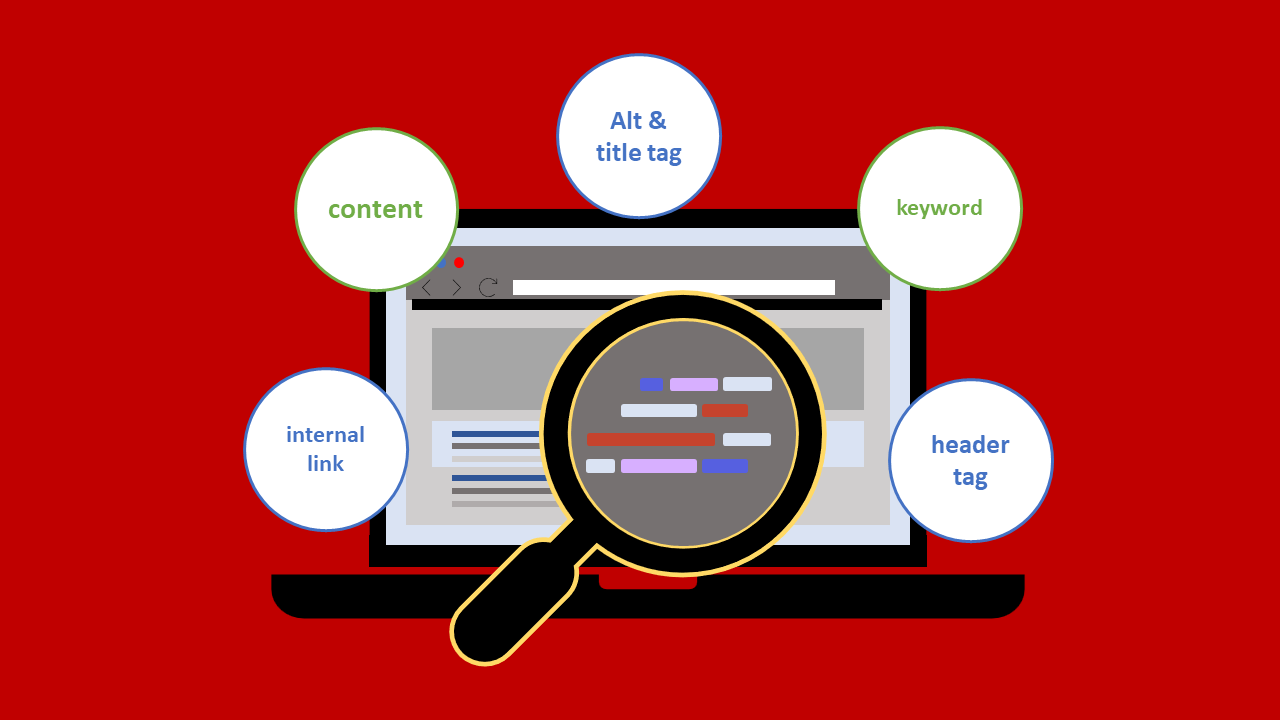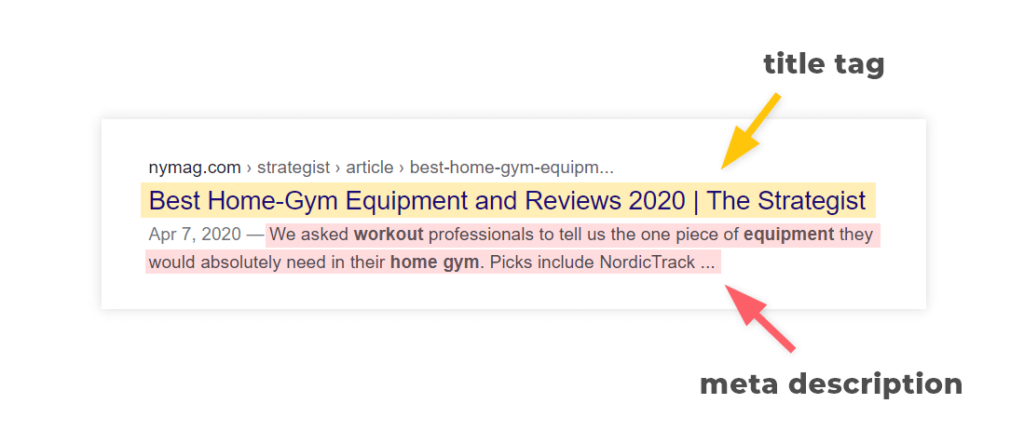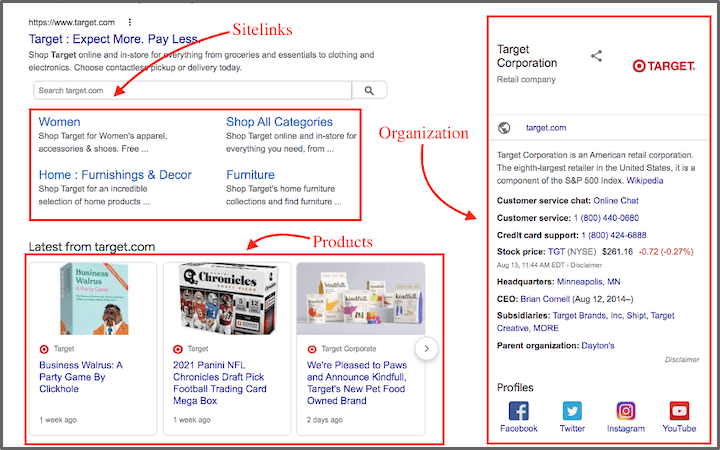
Guide for On-Page SEO in Singapore
What is SEO in Singapore?
SEO, or Search Engine Optimisation, is a technique that focuses on optimising elements within a website to make it rank higher in search engine results using good SEO guidelines. (SERPs). The technique includes optimising the content and structure of the page, using keywords throughout the page, and improving user experience by making the site easier to navigate. In Singapore, SEO has become increasingly important for business owners wanting to remain competitive to generate potential leads and organic traffic.
What is the Difference Between On-Page SEO and Off-Page SEO?
On-page search engine optimisation involves optimising elements on the actual webpage, such as titles, descriptions, content, keywords and metadata. Off-page SEO involves activities outside of a website, such as link-building or social media campaigns.
Why is On-Page SEO Important?
The importance of on-page SEO is that it helps ensure that search engines correctly index a website in Singapore and accurately represent the content of the pages. This makes it easier for users to find a website. On-page search engine optimization is an effective marketing tool for business owners building websites and seeking a competitive edge in Singapore’s digital landscape. It has several benefits, including:
- Increase Visibility – Implementing on-page SEO elements can help WordPress websites stand out in search engine results pages, increasing online presence, reducing bounce rate and boosting website performance and quality traffic.
- Improve User Experience – Optimizing the structure of a web page, using keywords throughout the content writing process, and making it easier to navigate can improve user experience and keep visitors on the site longer.
- Boost Rankings — On-page SEO factors can drive organic search traffic to a website and boost the rankings in search engine results pages.
1. Identifying Relevant Keywords
Keyword research is a key part of any on-page SEO strategy, and businesses in Singapore should take the time to understand what potential clients are searching for. It involves using keyword research tools and identifying the search terms and phrases internet users type into search engines for a product or service. To identify relevant keywords, start by researching what the target audience is searching for online.
Consider their needs and interests when crafting the list of keywords, and think about how they might describe or phrase a query related to the business or product. Once the primary keywords and phrases are identified, research each term’s competition level and monthly search volume. This will help assess whether organic search optimisation options in Singapore are viable. As search trends change, constantly be updated and refine the keywords used over time.
Write SEO-Friendly Meta Titles
Meta titles should accurately reflect the page’s content and be no more than 70 characters. The title should also include relevant keywords that are related to the page. This helps search engine algorithms understand what the page is about and make it easier for users to understand. Page titles should include keywords related to that page’s content and should be concise and descriptive so that search engines can easily understand them and rank them higher in search engine results.
Write Engaging Meta Descriptions
Meta descriptions are snippets of text that appear below page titles in search engine results, and they provide potential visitors with a brief overview of the content they can expect to find if they click through to the website. When crafting meta descriptions, it’s essential to keep them concise and descriptive, under 60 characters, while also including relevant keywords. Ensure each meta description is unique and tailored to the corresponding landing page.
Optimising the URL Slug
From the URL, what we need to achieve is for the users to understand the page. For example, https://arcc.asia/digital-marketing-blog/an-ultimate-guide-to-link-building-for-seo/ tells the user this page has link-building information. Searchers tend to click links that most closely match their search query. Descriptive URLs should also include the targeted keywords.
2. Create Readable Content For the Target Audience
Content should be well-written, accurate, relevant to the page topic, and engaging for the reader. Additionally, it should be easy to read and understand, using appropriate language and content that addresses the user’s search intent. User intent refers to what a user is looking for when they type a query into a search engine. Providing helpful information with valuable facts and figures in the body of the article can help make blog posts more comprehensive and engaging for readers.
Creating a Clear-Heading Structure
A well-structured heading structure helps search engines more easily understand the content of the pages and therefore provide users with the most relevant search results. When creating headings, use descriptive language that accurately reflects the relevant content.
Including Relevant Keywords in Content Strategy
When creating high-quality content, use keywords throughout the text naturally and include headings, subheadings and bullet points to break up the text and make it more readable. Ensure that keyword usage does not come at the expense of readability – keyword stuffing by having too many keywords in a single article can negatively impact search engine rankings.
Avoid using the same keywords and use synonyms and stop words instead. Google will recognise it even if it’s not an exact match. Using long-tail keywords can help target specific searches related to an industry. Relevant keywords should be closely related to the topic of a website and should appear naturally throughout the content.
Use Main Keywords In The First 100 Words Of Content
Using the main keywords in the first 100 words of content by including the main keywords early on, search engine algorithms can prioritise the page when it comes to ranking and visibility. Using the main keywords early on in the valuable content also helps readers quickly identify what the page is about, making it easier to decide if they want to continue reading.
3. Implementing an Effective Internal Link Structure Strategy
The key to an effective internal link structure strategy is creating a logical hierarchy of pages and linking them appropriately. It helps search engine crawlers understand the relevance of each page and provides users with a convenient way to navigate through the website. Start by creating a clear and easy-to-follow sitemap that includes all web pages, correctly categorising them into topics or themes. Then, use anchor text containing relevant keywords whenever possible when linking between webpages, as this will help improve their visibility in search engine results.
Avoid using generic words such as “read” or “click here” when linking; instead, opt for descriptive words that accurately describe the page’s content. Linking will allow Google to understand the value and relevancy of the content. The links will enable Google to crawl through the website and work out the connection between the various pages and contents. With more links Google will consider the page as more important, thus increasing the webpage ranking.
4. Image Optimization for Better Visibility on Search Engines
Image optimisation helps search engine crawlers better understand a page’s content and improves the user experience by providing images with descriptive text. There are several ways of optimising images, and one method would be using descriptive alt tags to optimise the file names for images. Alt tags best describe pictures and allow words to appear if the image search fails to load. Describe the images accurately to improve search rankings.
In addition to Alt Text, compress all images, such as JPEG files, before uploading them onto the website. This will ensure they are served quickly and with minimal loading time for visitors
5. Improve Website Speed
Having a quick loading speed is critical to be ranked high by Google’s search bots; Google’s success depends on serving what the user needs, and users want fast-loading results. The Desktop and Mobile speed are significant ranking factors, as Google specified. Achieve better results through various methods, like compressed images and smaller HTML tags.
6. Use Structured Data Markup to Improve Rankings
Schema Markup is a code to provide search engine crawlers with more information and how a website should be indexed and ranked in relation to searches. It improves the engagement probability of a user to the site’s link because things like images, dimensions, specific mentions of objects, and places can be included – thus providing better accurate information and making it easier for people to find the correct information.
Structured data markup involves adding HTML code to specific page elements such as headings, images or sections of text. For example, this could include product descriptions, ratings or reviews, which can impact rankings.
7. Search Engine Reputation Management (SERM)
SERM refers to monitoring and managing an online brand’s reputation on search engines. It involves actively monitoring what people are saying about a brand, responding to negative reviews, and promoting positive content associated with the brand.
SERM is a digital marketing strategy that helps protect a business’s online presence from potential damage caused by negative reviews or comments. Build trust with potential customers searching for information online.
When it comes to implementing SERM strategies in Singapore, there are a few key steps that should be taken:
- Monitor all mentions of the brand on search engines and online reviews
- SERP cleanse by publishing new positive content
- Increase trust using social media by engaging target audiences
- Respond to negative comments positively
Conclusion
For marketers in Singapore, it’s essential to understand technical SEO strategy to ensure a website is optimised for Google search engines. Start by thoroughly auditing a website to identify any issues or areas of improvement. This could involve checking page titles and meta descriptions are relevant to the content on the page, ensuring all links are valid and crawlable and verifying that the site structure is intuitive for users and search engine crawlers.
Once any issues have been identified, address them to ensure the website’s SEO performance meets the ultimate goal. Finally, monitoring the website’s performance with SEO consultants and analytics tools such as Google Analytics will help track the impact of different keyword strategies on website ranking and adjust accordingly in Singapore.
FAQ on On-Page SEO
- What is On-Page SEO?
On-Page SEO optimises individual web pages to rank higher, increase conversion rates and earn more relevant organic traffic in search engines.
- What techniques are used in On-Page Singapore SEO?
Techniques used by digital marketing agencies for their SEO service on On-Page SEO include keyword research, page title optimisation, meta tags optimisation, body content optimization, image optimisation and internal linking.
- How does On-Page SEO Singapore affect search engine ranking?
A website can improve its ranking on Google search engine results pages (SERPs) by utilising the techniques associated with Local On-Page SEO.
- What other benefits does On-Page SEO provide?
In addition to improving SERP rankings, On-Page SEO agencies can help websites load faster, increase potential traffic and digital presence, reduces bounce rate, increase user experience and engagement, and help marketers target a particular audience better.
- What other digital marketing strategies to increase potential clients and meet business goals?
Digital marketing consultants use other marketing strategies, including social media marketing, content marketing, link building, search engine marketing, Google Ads, and many more.








